Abstract
Natural populations of the cyanobacteria Spirulina species and Oscillatoria species obtained from Israeli fishponds were limited in growth by nitrogen availability in summer. Physiological indicators for nitrogen limitation, such as phycocyanin, chlorophyll a, and carbohydrate content, did not show clear evidence for nitrogen limited growth, since these organisms are capable of vertical migration from and to the nitrogen-rich bottom. By means of 14C labeling of the cells under simulated pond conditions followed by cell fractionation into macromolecular compounds, we found that carbohydrates synthesized at the lighted surface were partially utilized for dark protein synthesis at the bottom of these ponds.
Full text
PDF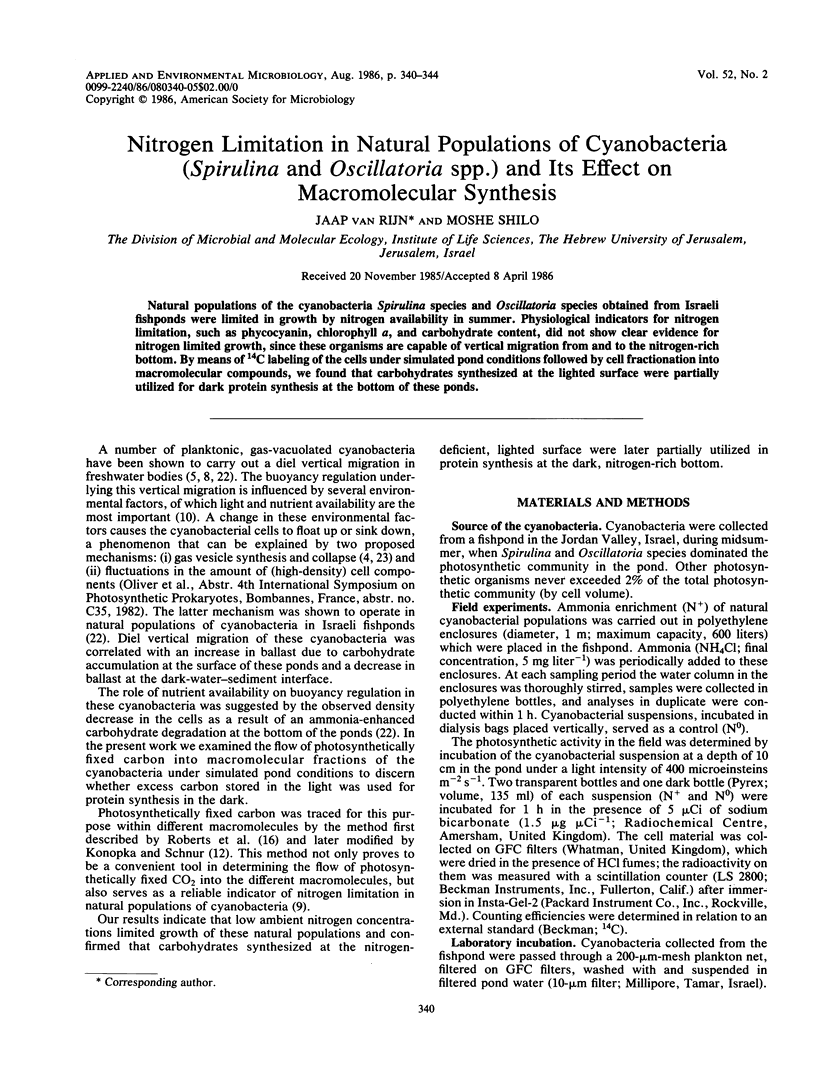
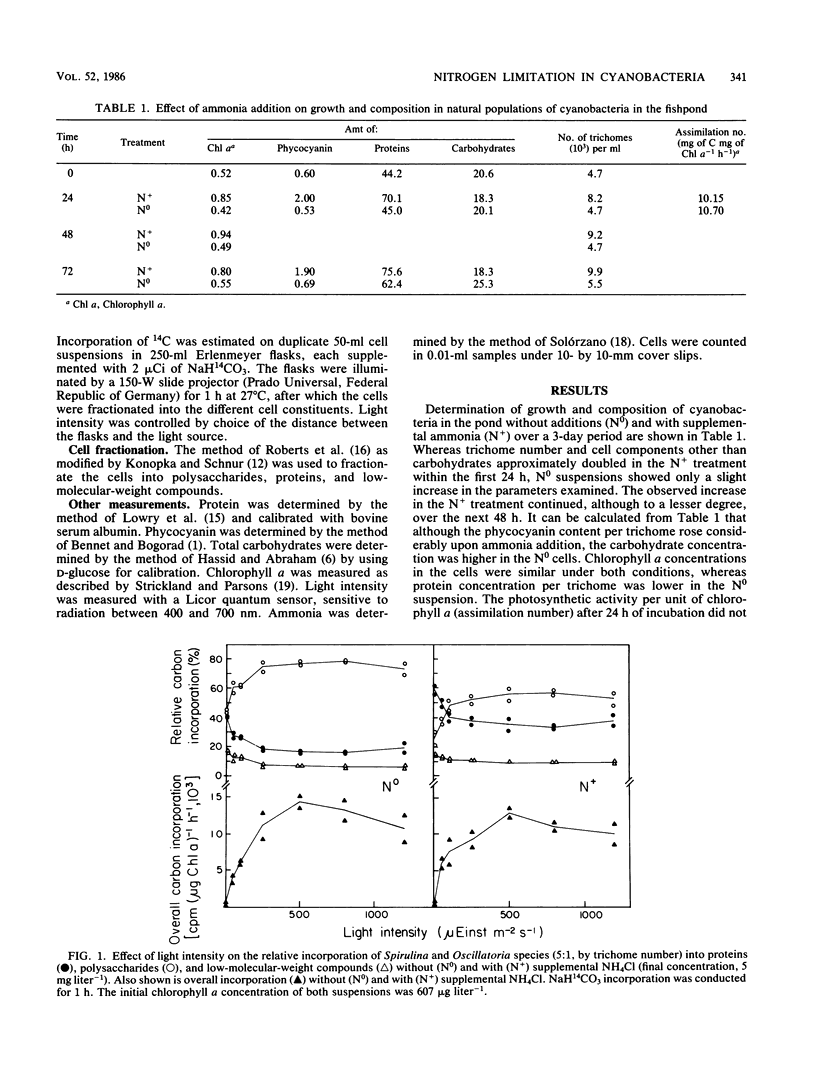
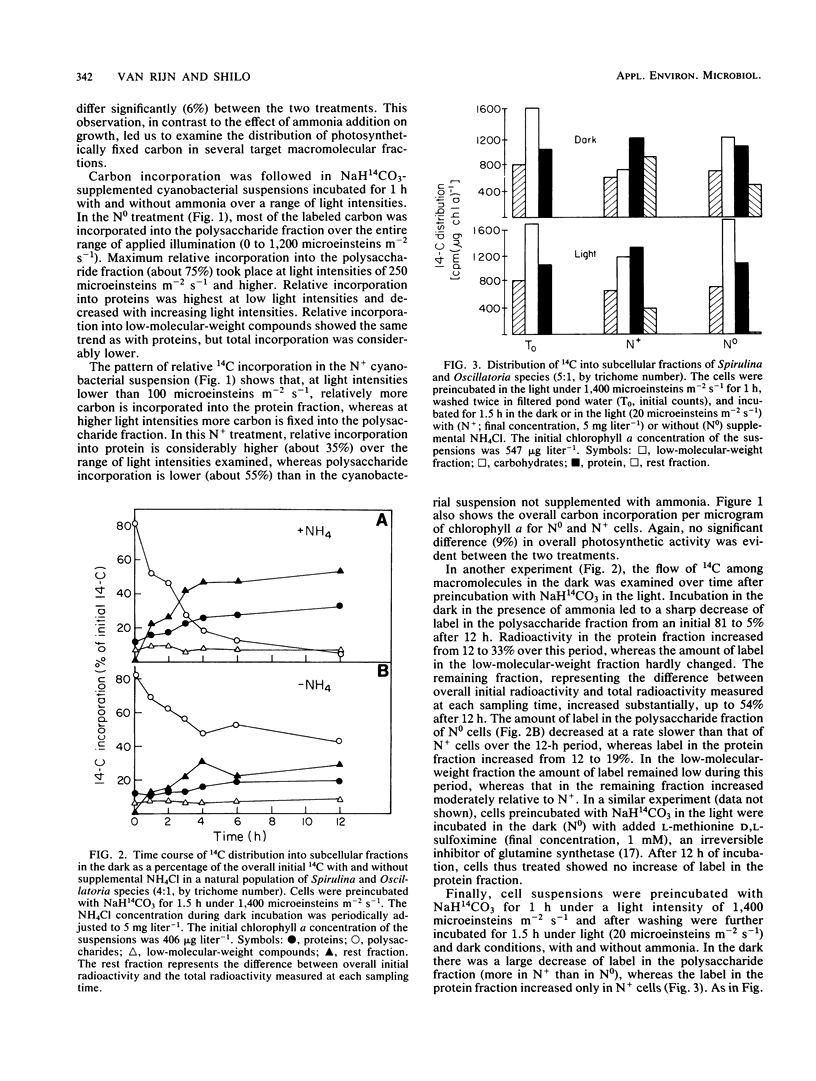
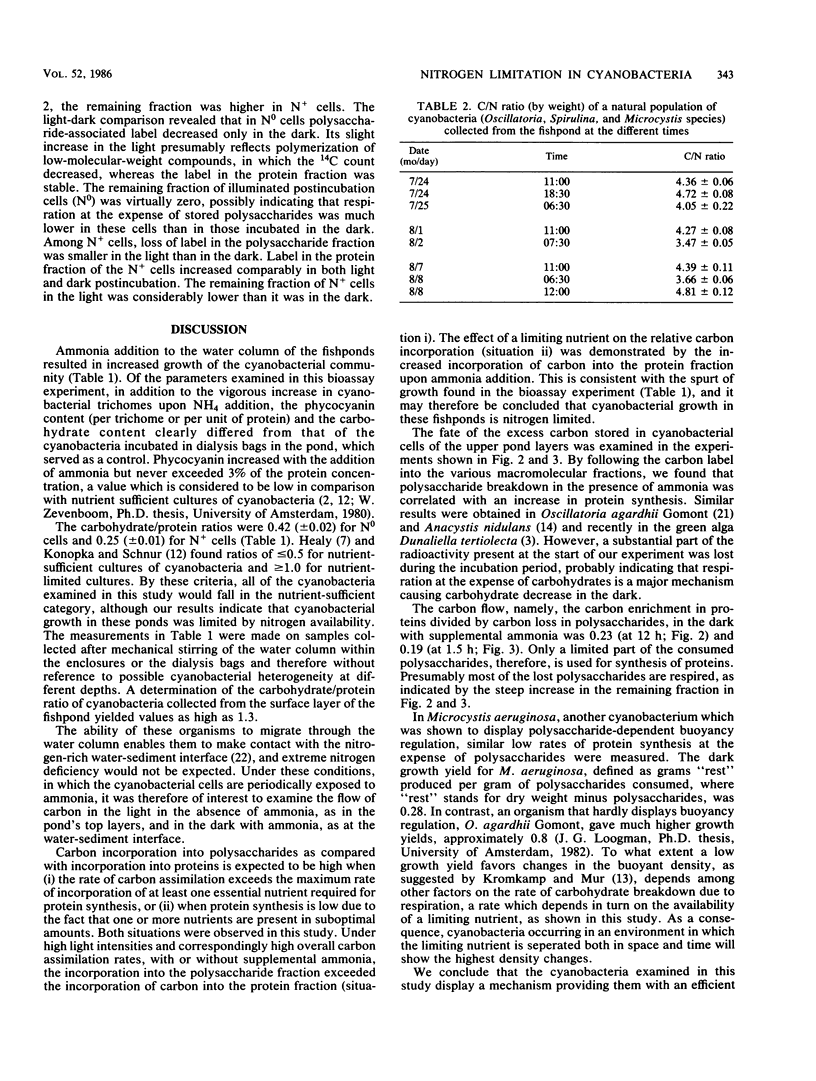
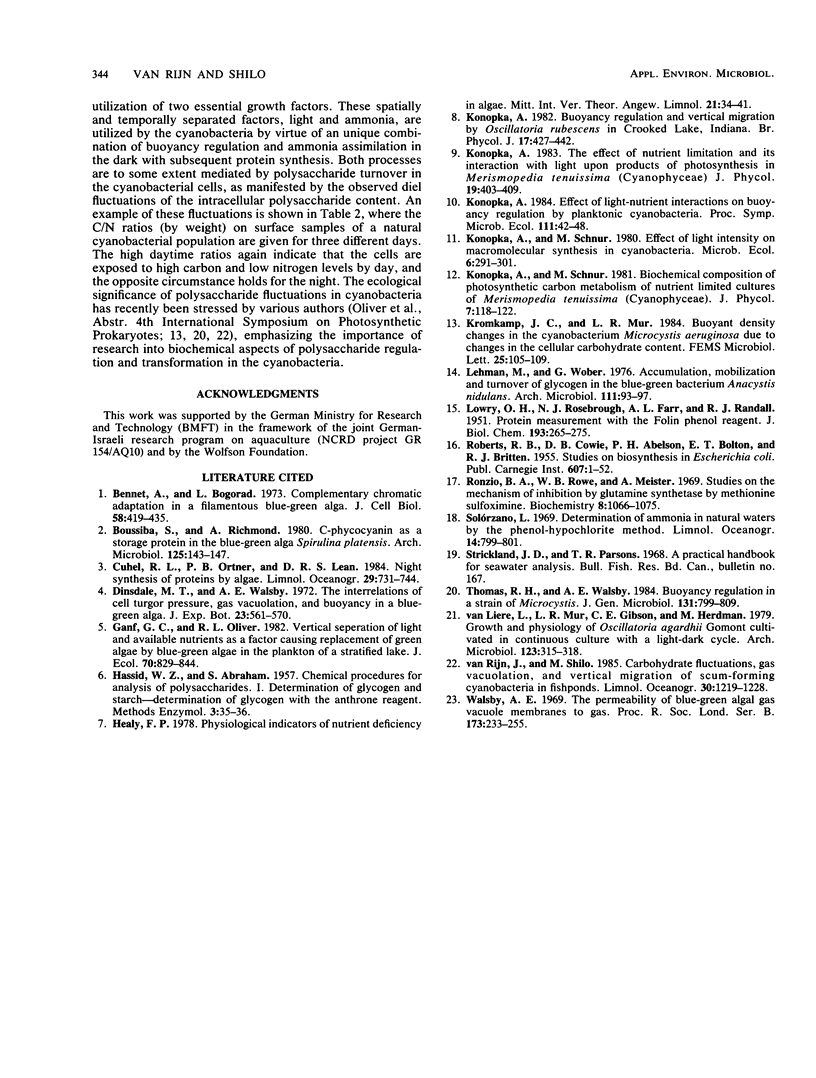
Selected References
These references are in PubMed. This may not be the complete list of references from this article.
- Bennett A., Bogorad L. Complementary chromatic adaptation in a filamentous blue-green alga. J Cell Biol. 1973 Aug;58(2):419–435. doi: 10.1083/jcb.58.2.419. [DOI] [PMC free article] [PubMed] [Google Scholar]
- LOWRY O. H., ROSEBROUGH N. J., FARR A. L., RANDALL R. J. Protein measurement with the Folin phenol reagent. J Biol Chem. 1951 Nov;193(1):265–275. [PubMed] [Google Scholar]
- Lehmann M., Wöber G. Accumulation, mobilization and turn-over of glycogen in the blue-green bacterium Anacystis nidulans. Arch Microbiol. 1976 Dec 1;111(1-2):93–97. doi: 10.1007/BF00446554. [DOI] [PubMed] [Google Scholar]
- Ronzio R. A., Rowe W. B., Meister A. Studies on the mechanism of inhibition of glutamine synthetase by methionine sulfoximine. Biochemistry. 1969 Mar;8(3):1066–1075. doi: 10.1021/bi00831a038. [DOI] [PubMed] [Google Scholar]


